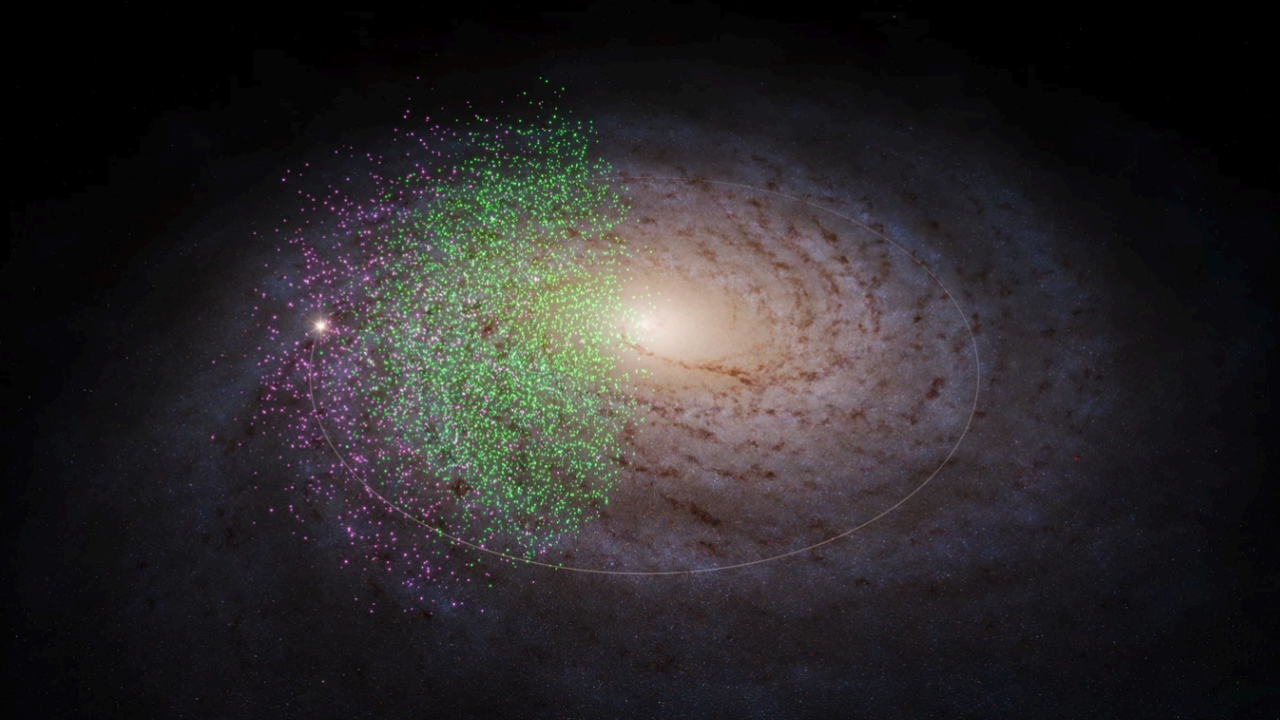Scientists of one of the world’s leading astronomy institutes, Germany-based Max Planck Institute for Astronomy, have identified two of the Milky Way’s earliest building blocks and named them“Shakti” and “Shiva”.
“These appear to be the remnants of two galaxies that merged between 12 and 13 billion years ago with an early version of the Milky Way, contributing to our home galaxy’s initial growth. The new find is the astronomical equivalent of archeologists identifying traces of an initial settlement that grew into a large present-day city. It required combining data for nearly 6 million stars,” the study said, the results of which have been published in Astrophysical Journal.
Khyati Malhan and Hans-Walter Rix of the Max Planck Institute for Astronomy were the ones who succeeded in identifying the two earliest building blocks that can still be recognised today as “proto-galactic fragments that merged with an early version of our Milky Way at the very beginning of the era of galaxy formation in the universe”. The components were identified by combining data from European Space Agency’s astrometry satellite Gaia with data from the Sloan Digital Sky Survey.
Researcher Malhan has named these two structures Shakti and Shiva, the latter one of the principal deities of Hinduism and the former a female cosmic force often portrayed as Shiva’s consort. “We observed that, for a certain range of metal-poor stars, stars were crowded around two specific combinations of energy and angular momentum. Shakti and Shiva might be the first two additions to the ‘poor old heart’ of our Milky Way, initiating its growth towards a large galaxy,” said Malhan, in a press statement. Rix provided detailed information about the stars’ chemical composition.
Their energy and angular momentum values, plus their overall low metallicity on a par with that of the “poor old heart”, makes Shakti and Shiva good candidates to be some of the earliest ancestors of our Milky Way.
“These appear to be the remnants of two galaxies that merged between 12 and 13 billion years ago with an early version of the Milky Way, contributing to our home galaxy’s initial growth. The new find is the astronomical equivalent of archeologists identifying traces of an initial settlement that grew into a large present-day city. It required combining data for nearly 6 million stars,” the study said, the results of which have been published in Astrophysical Journal.
Khyati Malhan and Hans-Walter Rix of the Max Planck Institute for Astronomy were the ones who succeeded in identifying the two earliest building blocks that can still be recognised today as “proto-galactic fragments that merged with an early version of our Milky Way at the very beginning of the era of galaxy formation in the universe”. The components were identified by combining data from European Space Agency’s astrometry satellite Gaia with data from the Sloan Digital Sky Survey.
Researcher Malhan has named these two structures Shakti and Shiva, the latter one of the principal deities of Hinduism and the former a female cosmic force often portrayed as Shiva’s consort. “We observed that, for a certain range of metal-poor stars, stars were crowded around two specific combinations of energy and angular momentum. Shakti and Shiva might be the first two additions to the ‘poor old heart’ of our Milky Way, initiating its growth towards a large galaxy,” said Malhan, in a press statement. Rix provided detailed information about the stars’ chemical composition.
Their energy and angular momentum values, plus their overall low metallicity on a par with that of the “poor old heart”, makes Shakti and Shiva good candidates to be some of the earliest ancestors of our Milky Way.

